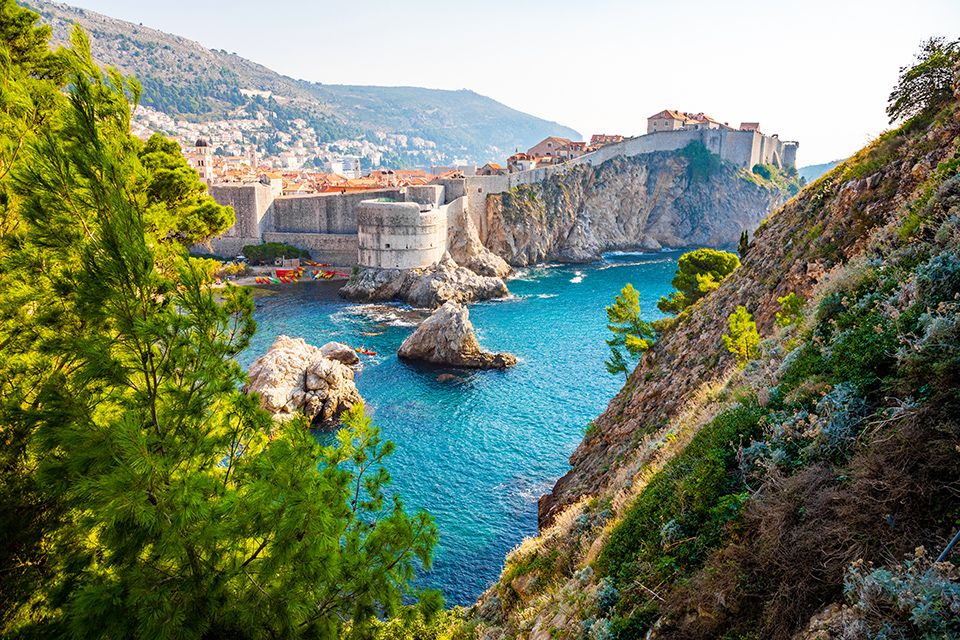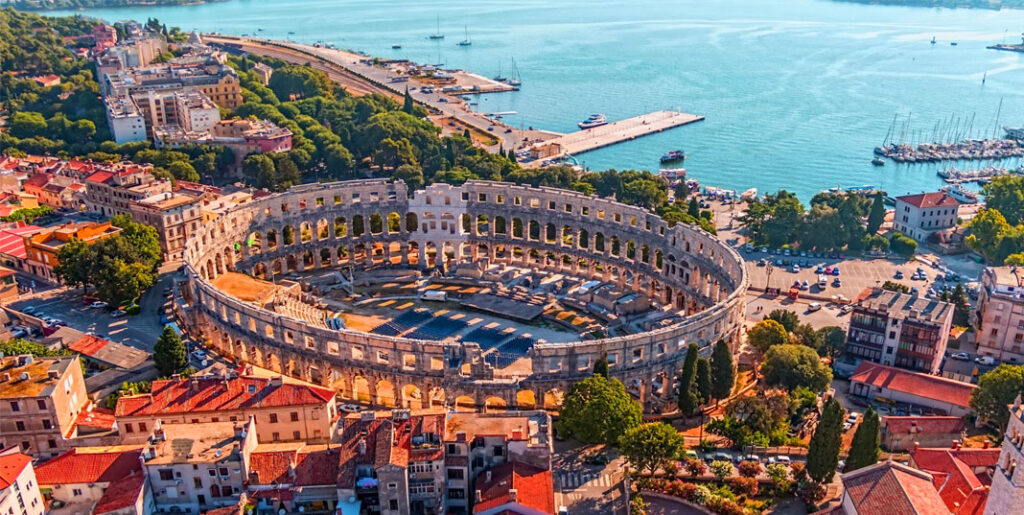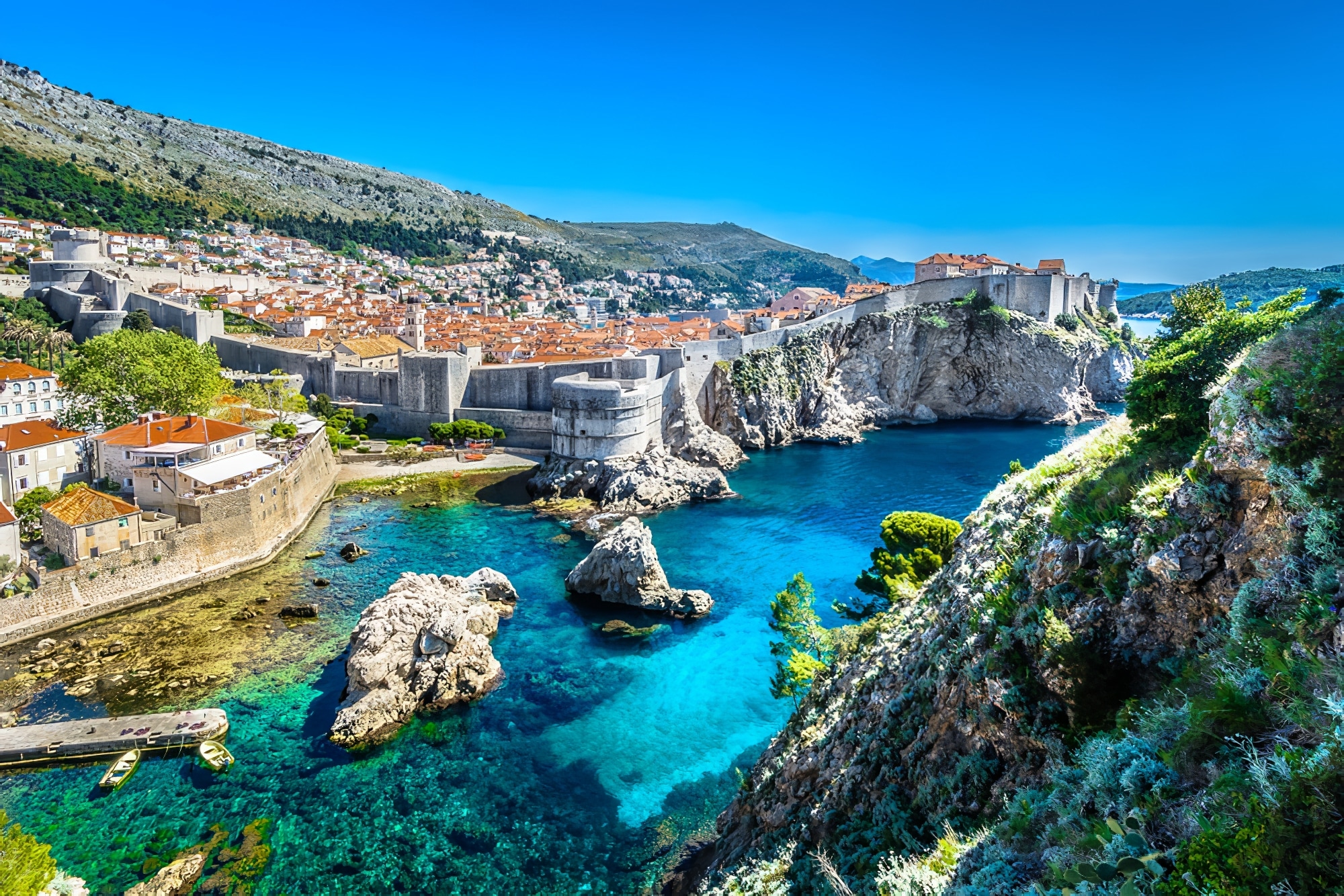
Croatia, a country blessed with an impossibly azure coastline, ancient cities steeped in history, and a breathtaking archipelago of islands, has firmly established itself as a must-visit destination. From the sun-drenched beaches of Dalmatia to the historic grandeur of its inland cities, Croatia offers a captivating blend of natural beauty, rich culture, and vibrant experiences. Whether you’re a history buff, an adventure seeker, a culinary enthusiast, or simply seeking relaxation by the sea, Croatia promises an unforgettable journey.
A Tapestry of History: Tracing Croatia’s Rich Past
Croatia’s history is a fascinating mosaic, shaped by millennia of civilizations and empires. The Illyrians were the earliest known inhabitants, followed by the Greeks and Romans who left an indelible mark on the landscape, particularly with their impressive ruins like the Pula Arena and Diocletian’s Palace in Split. The arrival of Slavic tribes in the 7th century laid the foundation for the modern Croatian identity.

Related Articles about Croatia: A Jewel of the Adriatic – Unveiling its Top Attractions and Essential Travel Guide:
- Singapore’s Golden Embrace: A Symphony of Luxury, Culture, and Unforgettable Stays
- Santiago: A Vibrant Tapestry of History, Culture, and Adventure in the Heart of Chile
- Jordan: A Timeless Journey Through Ancient Wonders and Desert Luxuries
- London Calling: Your Ultimate Guide to the Best Hotels and Experiences in the Capital
- Jordan: Where Ancient Sands Whisper Tales of Empires and Wonders
The Middle Ages saw the rise of powerful Croatian kingdoms, often intertwined with the Byzantine and Venetian empires. This era left behind a legacy of Romanesque and Gothic architecture, evident in cathedrals and town walls across the country. The Ottoman Empire’s expansion brought centuries of conflict and cultural exchange, particularly in the eastern regions.
Later, Croatia became part of the Austro-Hungarian Empire, a period that contributed to its grand architectural styles, especially in cities like Zagreb. The 20th century was marked by the tumultuous years of Yugoslavia, followed by Croatia’s hard-won independence in 1991. This recent history has shaped the resilient spirit of its people and added a layer of poignant remembrance to its historical narrative.
Unveiling the Crown Jewels: Croatia’s Top Attractions
Croatia boasts an embarrassment of riches when it comes to attractions, each offering a unique glimpse into its soul. Here are some of the absolute must-sees:
1. Dubrovnik: The Pearl of the Adriatic
No exploration of Croatia is complete without a visit to Dubrovnik, a UNESCO World Heritage site that feels like stepping back in time. Its iconic medieval city walls, meticulously preserved and encircling a labyrinth of charming cobblestone streets, are its crowning glory. Walk along the ramparts for breathtaking views of the terracotta rooftops, the shimmering Adriatic Sea, and the Lokrum Island offshore.
- Must-do:
- Walk the City Walls: An absolute must, offering unparalleled panoramic vistas.
- Stradun (Placa): The main street, alive with cafes, shops, and street performers.
- Rector’s Palace: A magnificent Gothic-Renaissance palace showcasing Dubrovnik’s rich past.
- Fort Lovrijenac: A formidable fortress perched on a cliff, offering stunning views of the Old Town.
- Cable Car to Mount Srđ: For an even more expansive and unforgettable panorama, especially at sunset.
- Lokrum Island: A short ferry ride away, offering beautiful gardens, peacocks, and ancient Benedictine monastery ruins.

2. Split: Diocletian’s Legacy
Split is a vibrant coastal city built around the magnificent Diocletian’s Palace, a UNESCO World Heritage site that is not just a historical monument but a living, breathing part of the city. This sprawling Roman palace, built for Emperor Diocletian, now houses shops, restaurants, homes, and churches within its ancient walls.
- Must-do:
- Explore Diocletian’s Palace: Wander through its cellars, courtyards, and the Peristyle.
- Climb the Bell Tower of St. Domnius Cathedral: For panoramic views of the city and the surrounding islands.
- Stroll along the Riva Promenade: The city’s bustling waterfront, perfect for people-watching and enjoying a coffee.
- Visit the Grgur Ninski Statue: A symbol of Croatian resistance.
- Hike or relax on Marjan Hill: Offering beautiful views and walking trails.
3. Plitvice Lakes National Park: Nature’s Masterpiece
Prepare to be mesmerized by the ethereal beauty of Plitvice Lakes National Park, another UNESCO World Heritage site. This natural wonder features a cascade of 16 terraced lakes, interconnected by a series of waterfalls and streams, all set within a lush, forested valley. The water’s vibrant turquoise and emerald hues are a result of its unique mineral composition.
- Must-do:
- Walk the Wooden Boardwalks: Explore the park’s trails, which wind over and around the lakes and waterfalls.
- Take the Electric Boat and Panoramic Train: These offer convenient ways to traverse longer distances within the park.
- Admire the Great Waterfall (Veliki Slap): The park’s tallest waterfall.
- Visit in different seasons: Each season offers a unique and stunning visual experience.
4. Hvar: The Glamorous Island Gem
Hvar is renowned for its glamorous atmosphere, stunning beaches, vibrant nightlife, and fragrant lavender fields. This island paradise attracts a sophisticated crowd and offers a perfect blend of relaxation and revelry.
- Must-do:
- Explore Hvar Town: Wander through its charming squares, narrow streets, and visit the Spanish Fortress (Fortica) for panoramic views.
- Visit Pakleni Islands: A beautiful archipelago just off the coast of Hvar, perfect for swimming, snorkeling, and boat trips.
- Relax on Stiniva Beach (Vis Island): While technically on Vis, it’s a popular day trip from Hvar and one of Europe’s most beautiful beaches.
- Experience the nightlife: Hvar is known for its lively bars and clubs.
5. Zadar: The City of Sunsets and Sea Organs
Zadar offers a unique blend of ancient history and innovative modern art installations. Its charming old town, located on a peninsula, is a delight to explore, but its true magic lies in its unique attractions.
- Must-do:
- The Sea Organ (Morske Orgulje): A mesmerizing architectural sound art installation that plays music through wave motion.
- The Greeting to the Sun (Pozdrav Suncu): A solar-powered light installation that transforms into a spectacular light show at night.
- Explore the Roman Forum: Remains of a significant Roman public space.
- Visit St. Donatus Church: A circular church dating back to the 9th century.
- Enjoy the sunset: Zadar is famous for its breathtaking sunsets, amplified by the Sea Organ.
6. Rovinj: The Istrian Jewel
Nestled on the Istrian peninsula, Rovinj is a picturesque fishing town with a distinctly Venetian charm. Its colorful buildings cascade down a hillside to the sparkling Adriatic Sea, crowned by the towering bell tower of St. Euphemia’s Church.
- Must-do:
- Climb the Bell Tower of St. Euphemia’s Church: Offers stunning panoramic views of the town and the surrounding islands.
- Wander through the Old Town: Get lost in its narrow, winding streets, discover hidden courtyards, and admire the colorful architecture.
- Explore the harbor: Watch the fishing boats and enjoy the vibrant atmosphere.
- Visit the Rovinj Heritage Museum: Learn about the town’s history and artistic heritage.
7. Šibenik: The Gateway to the Kornati Islands
Šibenik is a historic coastal city that serves as a gateway to the stunning Kornati Islands National Park. Its most impressive landmark is the Cathedral of St. James, a UNESCO World Heritage site built entirely of stone.
- Must-do:
- Visit the Cathedral of St. James: Admire its unique architecture and intricate stone carvings.
- Explore St. Michael’s Fortress: Offering incredible views of the city and the sea.
- Take a day trip to the Kornati Islands National Park: Explore the surreal landscape of over 100 uninhabited islands.
- Wander through the old town: Discover its charming squares and ancient streets.
Beyond the Highlights:
Croatia offers countless other gems, including:
- Zagreb: The vibrant capital city, with its Austro-Hungarian architecture, lively markets, and rich cultural scene.
- Korčula Island: Known as "Little Dubrovnik," with its fortified old town and Marco Polo’s supposed birthplace.
- Vis Island: A more laid-back and unspoiled island, famous for its stunning beaches and military history.
- Mljet National Park: An island of serene lakes and lush forests, perfect for nature lovers.
- Istrian Peninsula: Explore charming hilltop towns like Motovun and Grožnjan, indulge in truffle hunting, and enjoy world-class wine and olive oil.
Essential Travel Tips for Your Croatian Adventure
To make the most of your Croatian journey, consider these practical tips:
- Currency: The official currency is the Euro (€).
- Language: Croatian is the official language. English is widely spoken in tourist areas.
- Visa: Check visa requirements based on your nationality. Many nationalities can enter visa-free for short stays.
- Tipping: Tipping is appreciated but not mandatory. A tip of 10-15% is customary in restaurants if you’re satisfied with the service.
- Safety: Croatia is a very safe country for tourists.
- Water: Tap water is generally safe to drink, but bottled water is readily available.
- Sun Protection: The sun can be intense, especially during summer. Pack sunscreen, a hat, and sunglasses.
- Book in Advance: During peak season (June-August), it’s advisable to book accommodation and popular tours in advance.
Accommodation Options: From Luxury to Budget-Friendly
Croatia offers a diverse range of accommodation to suit every budget and preference:
- Hotels: From luxurious five-star resorts along the coast to charming boutique hotels in historic city centers, you’ll find plenty of options.
- Apartments and Villas: This is a very popular choice, offering more space, privacy, and the option to self-cater. Many are available through platforms like Airbnb.
- Guesthouses (Sobe): Often family-run, these offer a more intimate and local experience at affordable prices.
- Hostels: Budget travelers will find a good selection of hostels in major cities and popular tourist destinations.
- Camping: Croatia has numerous well-equipped campsites, particularly along the coast, offering a more nature-focused experience.
Getting Around Croatia: Seamless Travel
Navigating Croatia is relatively easy, with various transportation options:
- By Air: The main international airports are in Zagreb (ZAG), Split (SPU), Dubrovnik (DBV), and Zadar (ZAD). Domestic flights connect major cities.
- By Car: Renting a car offers the most flexibility, especially for exploring smaller towns and scenic routes. Roads are generally well-maintained. Be aware of toll roads.
- By Bus: An extensive bus network connects most towns and cities. Buses are comfortable and a cost-effective option.
- By Train: The train network is more limited, primarily connecting inland cities. It’s a good option for traveling between Zagreb and cities like Split or Rijeka.
- By Ferry: Ferries are essential for island hopping. Jadrolinija is the main ferry operator, with routes connecting the mainland to numerous islands.
- Within Cities: Most cities are easily walkable. Public transport (buses) is available in larger towns, and taxis are also an option.
The Best Time to Visit Croatia: Embracing the Seasons
Croatia offers distinct experiences throughout the year:
- Spring (April-May): Pleasant temperatures, blooming wildflowers, and fewer crowds make this an ideal time for exploring cities and enjoying outdoor activities before the summer heat.
- Summer (June-August): The peak season, characterized by hot, sunny weather, perfect for beach holidays and swimming. Expect larger crowds and higher prices.
- Autumn (September-October): Warm days, cooler evenings, and fewer tourists make this a fantastic time to visit, especially for those interested in hiking, cycling, and wine tasting. The sea is still warm enough for swimming in early autumn.
- Winter (November-March): While the coast is milder, inland areas can be cold. This is a quieter time, ideal for exploring cities, enjoying Christmas markets (especially in Zagreb), and taking advantage of lower prices. Some coastal attractions may have reduced operating hours.
In Conclusion:
Croatia is a destination that truly has it all. From the ancient allure of its walled cities to the breathtaking natural beauty of its national parks and islands, it promises an enriching and unforgettable travel experience. With its captivating history, diverse attractions, and welcoming atmosphere, Croatia beckons you to discover its magic and create memories that will last a lifetime. So, pack your bags, embrace the spirit of adventure, and prepare to fall in love with this jewel of the Adriatic.





